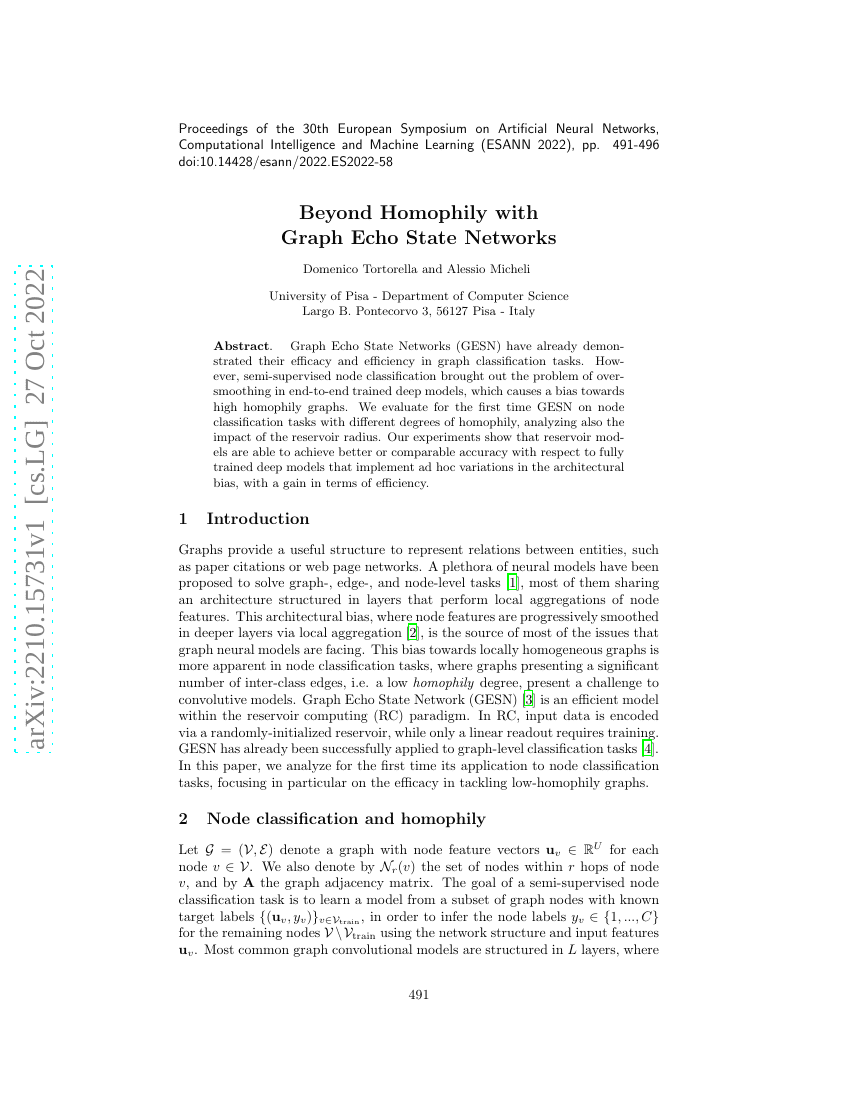Command Palette
Search for a command to run...
Domenico Tortorella Alessio Micheli

Abstract
Graph Echo State Networks (GESN) have already demonstrated their efficacy and efficiency in graph classification tasks. However, semi-supervised node classification brought out the problem of over-smoothing in end-to-end trained deep models, which causes a bias towards high homophily graphs. We evaluate for the first time GESN on node classification tasks with different degrees of homophily, analyzing also the impact of the reservoir radius. Our experiments show that reservoir models are able to achieve better or comparable accuracy with respect to fully trained deep models that implement ad hoc variations in the architectural bias, with a gain in terms of efficiency.
Benchmarks
| Benchmark | Methodology | Metrics |
|---|---|---|
| node-classification-on-actor | Graph ESN | Accuracy: 34.5 ± 0.8 |
| node-classification-on-chameleon | Graph ESN | Accuracy: 76.2±1.2 |
| node-classification-on-citeseer-full | Graph ESN | Accuracy: 74.5±2.1 |
| node-classification-on-cora-full-supervised | Graph ESN | Accuracy: 86.0±1.0 |
| node-classification-on-cornell | Graph ESN | Accuracy: 81.1±6.0 |
| node-classification-on-pubmed-full-supervised | Graph ESN | Accuracy: 89.2±0.3 |
| node-classification-on-squirrel | Graph ESN | Accuracy: 71.2±1.5 |
| node-classification-on-texas | Graph ESN | Accuracy: 84.3±4.4 |
| node-classification-on-wisconsin | Graph ESN | Accuracy: 83.3±3.8 |
Build AI with AI
From idea to launch — accelerate your AI development with free AI co-coding, out-of-the-box environment and best price of GPUs.